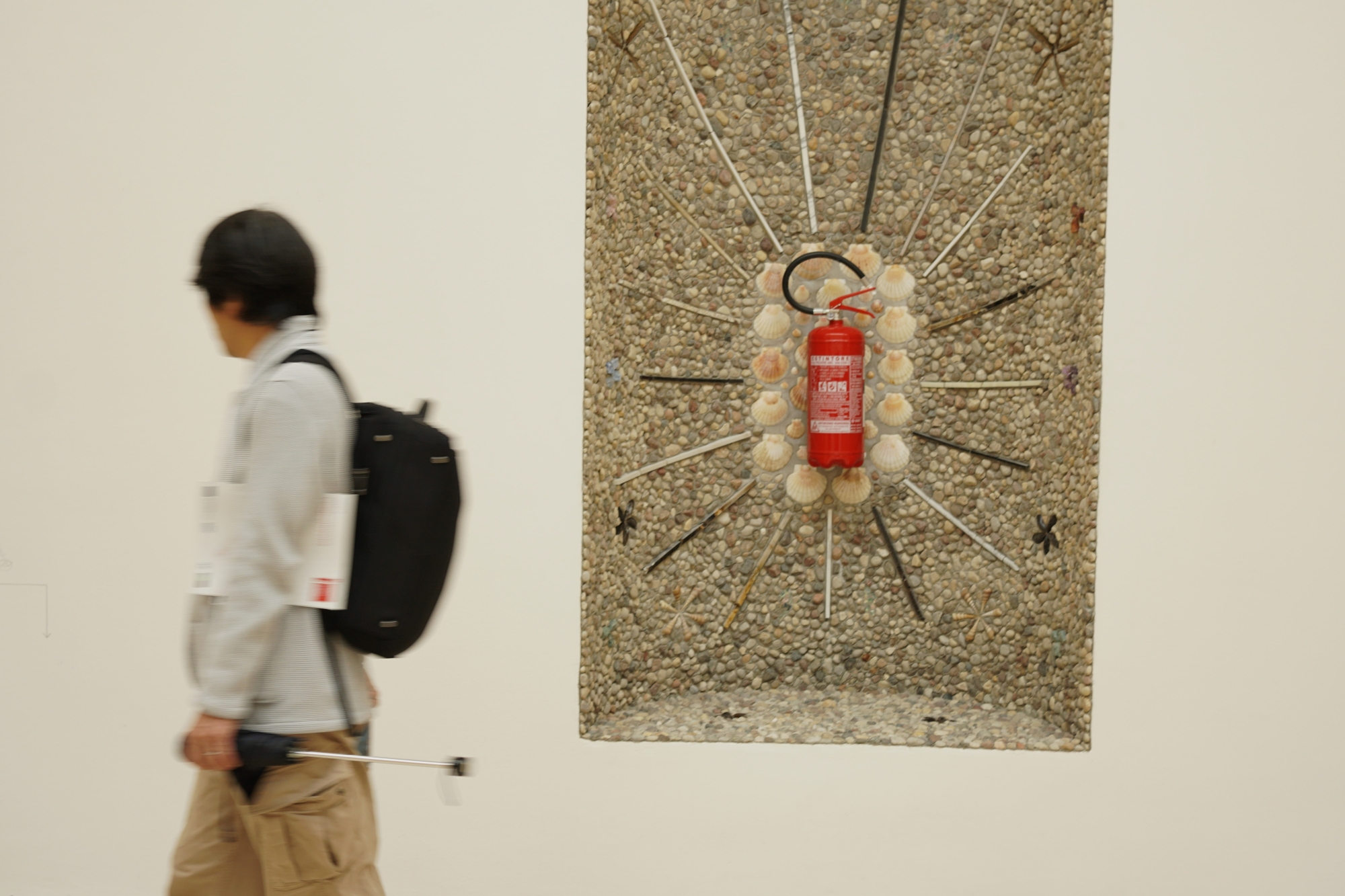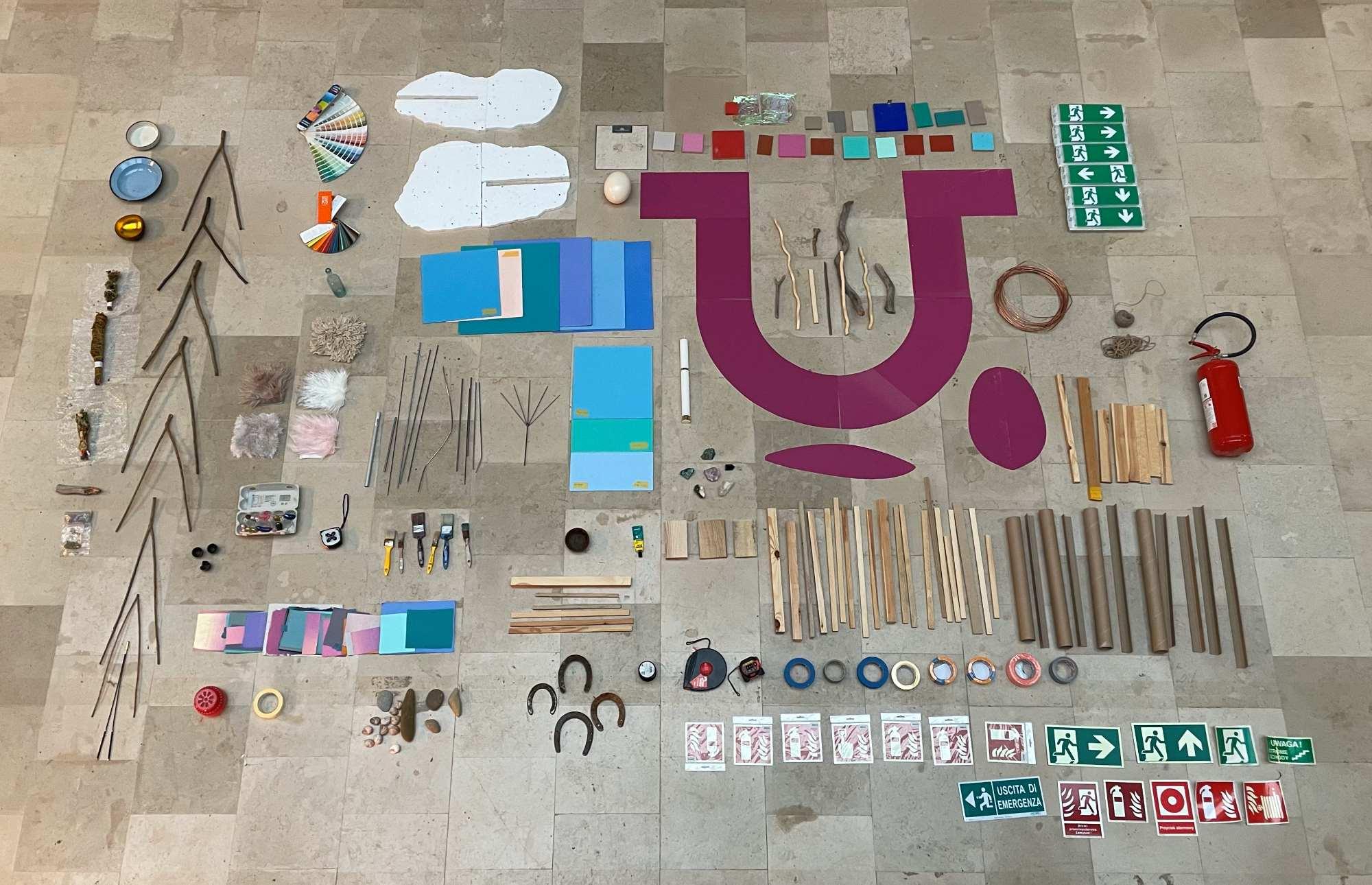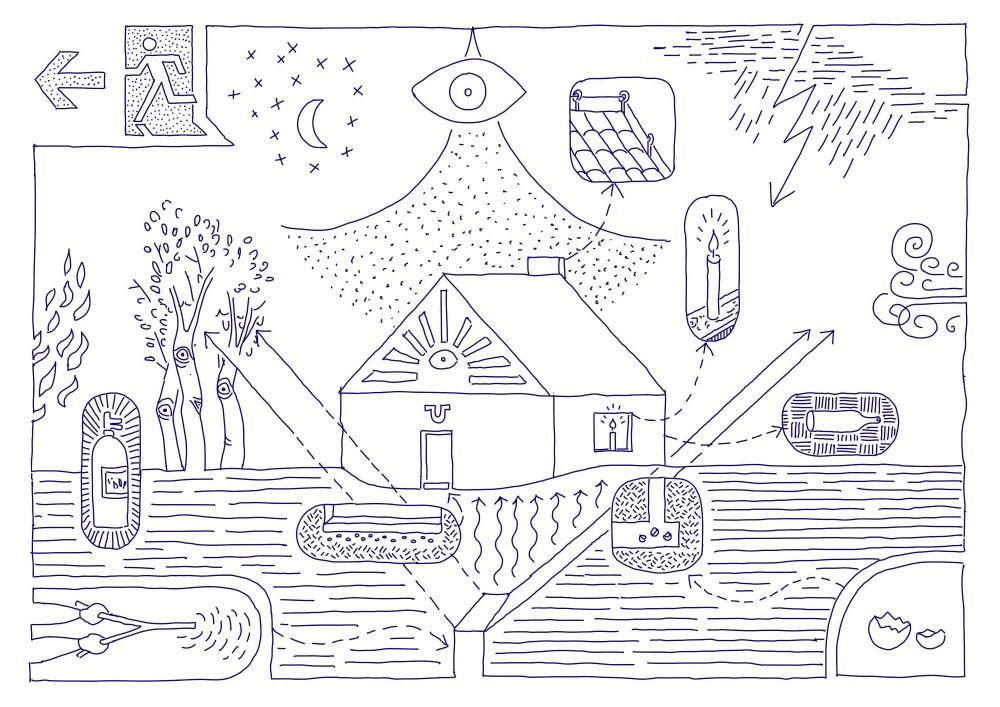Published: 27 April 2025
Polish Pavilion at the Venice Biennale of Architecture: A Thoughtful Look at the People Who Use Architecture
Author: Editorial Team
This year, the Polish Pavilion at the Venice Biennale of Architecture turns the spotlight on something deeply human—the need for safety and the ways architecture responds to it. Co-curator of the exhibition and lecturer at the School of Form at SWPS University, Aleksandra Kędziorek, shares the story behind the project—and how architecture has long been tied to rituals, symbols, and tools that help us feel secure.

Objects that protect us
The Polish Pavilion's exhibition at the 19th International Architecture Exhibition in Venice, titled “Lares and Penates. On Building a Sense of Security in Architecture,” runs from May 10 to November 23, 2025. The concept was developed by an interdisciplinary team, including two lecturers from the School of Form—architect Maciej Siuda and art historian Aleksandra Kędziorek—working alongside artists Krzysztof Maniak and Katarzyna Przezwańska.

“Lares and Penates” is an exploration of how architecture helps create a sense of security. Our focus is on long-standing rituals, traditions, and gestures—the everyday actions that people, users of architecture, perform in their homes and spaces.
Maciej Siuda
architect and co-curator of the exhibition
The title of the exhibition refers to the protective household deities of ancient Rome, who were believed to bring prosperity and guard against danger. Over time, the phrase lares and penates also became a metaphor for everyday domestic objects. The curators examined various objects—both ancient and contemporary—believed to offer protection to members of a household.
Shelter from the elements and disasters
The exhibition at the Polish Pavilion emphasizes architecture's role as a shelter from danger. At first, this meant protection from natural forces.

In the 18th century, Marc-Antoine Laugier described architecture as something created to protect people from rain, wind, and the scorching sun. But over time, new threats emerged—wars, diseases, and other dangers—prompting new architectural responses, particularly in the modernist era. Today, we face armed conflicts and climate crisis. These threats, whether real or perceived, have always sparked fear, and people have always responded in different ways. This exhibition explores how these reactions have been reflected in architecture.
Aleksandra Kędziorek
art historian and co-curator of the exhibition

In ancient times, construction would begin with the casting of a horoscope to bring prosperity—a tradition that lasted for centuries. In 1674, at the request of Stanisław Herakliusz Lubomirski, Tylman van Gameren drew up such a horoscope before the renovation of Ujazdowski Castle in Warsaw. The Dutch-born architect even had a special tool for casting horoscopes in his kit.
Another custom meant to ensure a successful construction project was the topping out ceremony, known in Poland as a “wiecha”. The "wiecha" is a decorative wreath adorned with colorful ribbons, which is placed atop a building to mark the completion of a major milestone—typically, the installation of the roof’s first beam. Today, this wreath is hung once the building reaches its intended height. Today, the wreath is hung once the building reaches its final height. It has become a moment of celebration—a chance to present the project to the media and mark the nearing end of construction. But its roots are spiritual.

Originally, it was a way to invite the spirits of the trees—used as building material—to inhabit the new space and bring good fortune for the building. We often continue various traditions without knowing their origins, repeating gestures that have been around for centuries.
Aleksandra Kędziorek
art historian and co-curator of the exhibition
Horseshoe and fire extinguisher: two systems of meaning
The exhibition features over 20 objects linked to practices meant to protect homes and ease fears.

We tell their stories by combining two realms: one technical—rooted in engineering or legal standards—and one cultural, grounded in cultural rituals and beliefs. Both serve to bring a sense of safety, comfort, or luck to the home.
Aleksandra Kędziorek
art historian and co-curator of the exhibition
The technical realm includes fire extinguishers, emergency exit signs, and smoke detectors—objects already present in the pavilion, but now brought into focus. For example, a fire extinguisher will be displayed against a striking mosaic backdrop. The cultural order features a century-old worn-down threshold, a horseshoe above the entrance to the pavilion, a dowsing rod, and bundles of herbs used in smoke cleansing rituals meant to purify spaces of negative energy.


In the exhibition, we combined objects from both categories—and found that the lines between them aren’t always so clear. A surveillance camera might make us feel safer, or watched. Owning a fire extinguisher can feel reassuring, even if we do not know how to use it. Technical solutions are not always effective, and cultural ones are not necessarily irrational. We do not judge their usefulness. We are showing how they coexist—and how they shape the spaces we live in. These objects are part of how we cope with different anxieties we experience in our surroundings.
Aleksandra Kędziorek
art historian and co-curator of the exhibition
Kędziorek also emphasizes that the exhibition is performative. While filled with objects, the exhibition is ultimately about what we do with them — the rituals, habits, and shared practices that give them meaning. Collecting these objects was an intriguing journey that became an integral part of the project, fostering numerous connections along the way. Some items were found or donated, while others were borrowed or crafted by hand. They will make a brief appearance in the pavilion, play their intended roles, and then return to their original homes — some back to the forest, others to the people from whom they were borrowed, and a few will be taken apart.
Community and a sense of agency
At its heart, “Lares and Penates” exhibition draws attention to everyday architecture users and their psychological needs.

We aim to dive deep into the complexities of the world around us—not just the technical aspects of architecture, but also the broader cultural practices that surround it. Architecture users navigate an intricate world, one that is not purely rational. Emotions and reason intertwine. Instead of offering simple solutions, we want to engage with this layered reality. The need for safety is a major theme in public discourse today. We want to take a thoughtful look at the people who use architecture and the fears they face.
Aleksandra Kędziorek
art historian and co-curator of the exhibition
Kędziorek highlights the concept of community intelligence at the core of the exhibition—a body of knowledge and practices carried out by individuals, but collectively shared within a community. This shared experience fosters a sense of belonging and empowers individuals—small gestures through which we can effectively confront our fears.
Practical info
“Lares and Penates. On Building a Sense of Security in Architecture” at the 19th International Architecture Exhibition
Where: Polish Pavilion, Giardini della Biennale, Venice, Italy
When: May 10 – November 23, 2025
The exhibition at the Polish Pavilion is organized by Zachęta – National Gallery of Art. Poland’s participation in the Biennale is financed by the Ministry of Culture and National Heritage.
